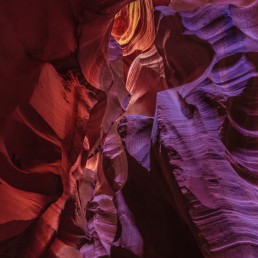What is Tarot
Tarot is a mystical and symbolic tool. At its core, Tarot consists of a deck of 78 cards, each containing imagery and symbolism that resonate with various aspects of human experience, spirituality, and the subconscious. The origins of Tarot are not exactly known but it is generally believed that the deck first appeared in Europe during the 14th or 15th century, likely as a card game similar to bridge. Over time, it evolved into a tool for divination and introspection, embraced by mystics, philosophers, and seekers.
The Tarot deck is divided into two main sections: the Major Arcana and the Minor Arcana. The Major Arcana consists of 22 cards, each representing significant archetypal themes and spiritual lessons. These include iconic cards like The Fool, The Magician, The Lovers, and The World. Each card in the Major Arcana tells a part of the larger story of human experience, with The Fool often representing the beginning of the journey, and The World symbolising completion – the end of a cycle.
The remaining 56 cards make up the Minor Arcana, which is further divided into four suits: Cups, Wands, Swords, and Pentacles (or Coins). Each suit aligns with a specific element and area of life. Cups represent emotions and relationships, Wands reflect creativity and action, Swords are associated with intellect and conflict, and Pentacles relate to the material world and physical well-being. Within each suit, the cards are numbered from Ace to Ten, followed by four “court cards”: Page, Knight, Queen, and King. While the Major Arcana deals with grand, spiritual themes, the Minor Arcana reflects more day-to-day experiences and challenges.

The Practice of Tarot Card Reading
The practice of Tarot reading involves drawing cards and interpreting their meanings based on their symbolism, position, and relationship with other cards in the spread. A spread is a specific layout or arrangement of cards that helps the reader explore a question or situation from multiple angles. Some common spreads include the three-card spread, which typically represents past, present, and future, and the Celtic Cross spread, which offers a deeper exploration of a person’s situation and underlying influences.
Contrary to the common misconception, a Tarot card reading is not necessarily about predicting the future. Many Tarot practitioners believe that the cards do not foretell a fixed destiny but instead offer insight into possible outcomes and paths. In this way, Tarot can act as a mirror to reflect the subconscious thoughts, emotions, and desires that may be influencing one’s actions and decisions. It’s a tool for self-reflection, providing clarity and revealing aspects of a person’s psyche that might otherwise remain hidden.
Unravelling the Symbolism of Tarot Cards
The images on Tarot cards are rich with symbols, often drawn from mythology, religion, and the collective unconscious. These symbols connect with archetypes – recurring characters and themes that resonate with human experiences across cultures. For example, The Empress card often represents fertility, abundance, and nurturing, evoking qualities associated with motherhood and creation. The Hermit symbolises introspection and solitude, reflecting the archetype of the seeker or sage. These archetypal images can prompt the reader or querent (the person asking the question) to explore their own inner landscapes and motivations.
Tarot and Psychology
Tarot has also found a place in modern psychology, particularly in Jungian analysis. Carl Jung, a Swiss psychiatrist, saw the Tarot’s archetypes as representations of universal experiences and aspects of the human mind. Some therapists use Tarot as a tool to help clients access their unconscious and work through issues in a symbolic way. The cards can serve as prompts for discussing themes of growth, transformation, conflict, and healing.
The Art of Tarot
In addition to its use in personal and spiritual growth, Tarot has also been embraced by various cultures as a form of artistic expression. Numerous artists have created unique interpretations of the Tarot deck, each bringing new perspectives to the imagery and symbolism of the cards. Today, there are countless versions of Tarot decks, ranging from traditional designs inspired by the Rider-Waite deck (one of the most popular and widely used Tarot decks) to modern decks that reflect diverse cultural backgrounds, personal philosophies, and artistic styles.
Ultimately, a Tarot reading is a versatile tool that appeals to people for a variety of reasons. Some approach it as a spiritual practice, others see it as a tool for self-reflection, and still others enjoy it as a form of creative and symbolic play. Regardless of how one chooses to engage with Tarot, the cards offer a unique way to explore the mysteries of life, the psyche, and the connections between the inner and outer worlds.

